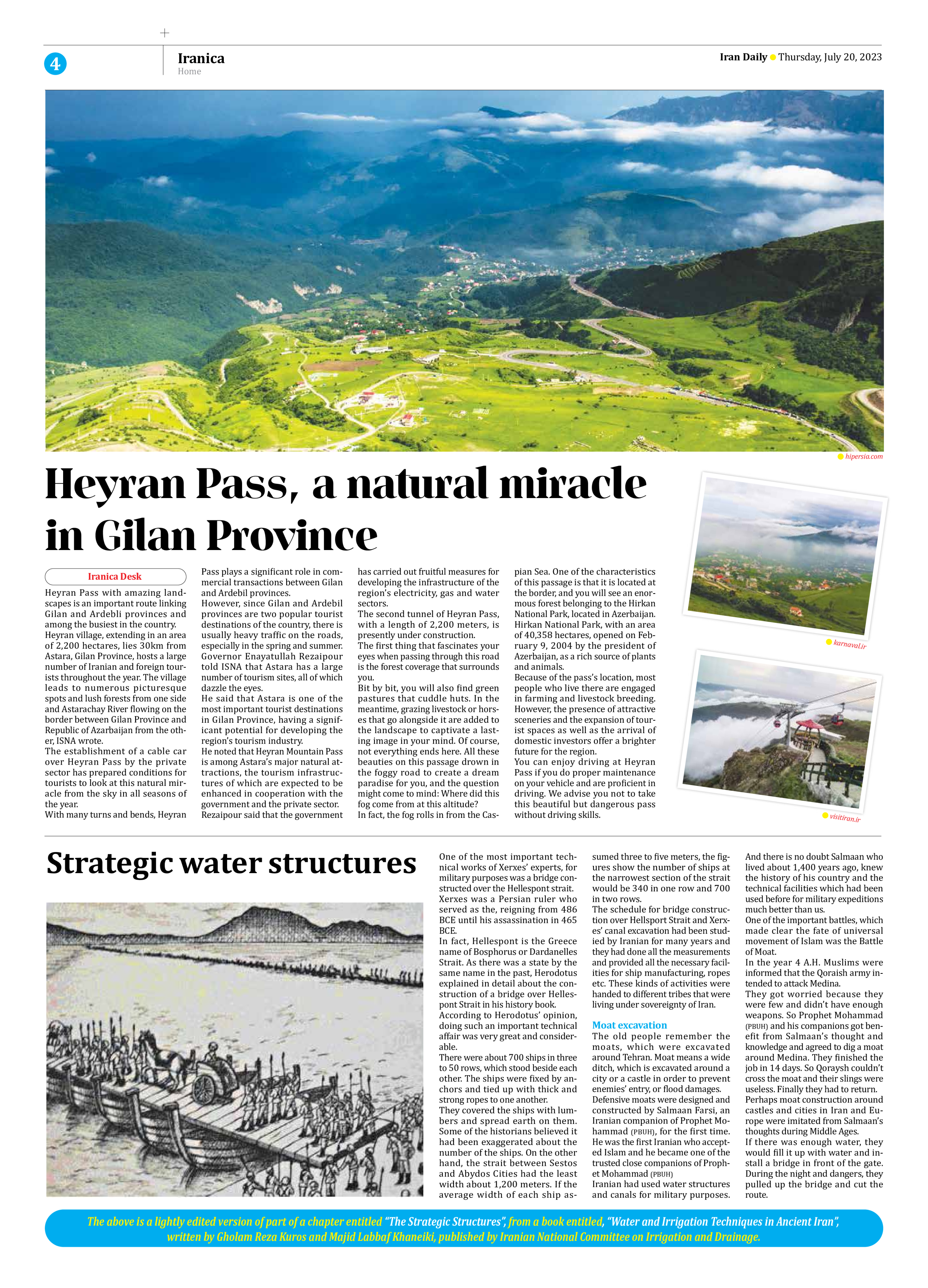
Strategic water structures
One of the most important technical works of Xerxes’ experts, for military purposes was a bridge constructed over the Hellespont strait.
Xerxes was a Persian ruler who served as the, reigning from 486 BCE until his assassination in 465 BCE.
In fact, Hellespont is the Greece name of Bosphorus or Dardanelles Strait. As there was a state by the same name in the past, Herodotus explained in detail about the construction of a bridge over Hellespont Strait in his history book.
According to Herodotus’ opinion, doing such an important technical affair was very great and considerable.
There were about 700 ships in three to 50 rows, which stood beside each other. The ships were fixed by anchors and tied up with thick and strong ropes to one another.
They covered the ships with lumbers and spread earth on them. Some of the historians believed it had been exaggerated about the number of the ships. On the other hand, the strait between Sestos and Abydos Cities had the least width about 1,200 meters. If the average width of each ship assumed three to five meters, the figures show the number of ships at the narrowest section of the strait would be 340 in one row and 700 in two rows.
The schedule for bridge construction over Hellsport Strait and Xerxes’ canal excavation had been studied by Iranian for many years and they had done all the measurements and provided all the necessary facilities for ship manufacturing, ropes etc. These kinds of activities were handed to different tribes that were living under sovereignty of Iran.
Moat excavation
The old people remember the moats, which were excavated around Tehran. Moat means a wide ditch, which is excavated around a city or a castle in order to prevent enemies’ entry, or flood damages.
Defensive moats were designed and constructed by Salmaan Farsi, an Iranian companion of Prophet Mohammad (PBUH), for the first time. He was the first Iranian who accepted Islam and he became one of the trusted close companions of Prophet Mohammad (PBUH)
Iranian had used water structures and canals for military purposes. And there is no doubt Salmaan who lived about 1,400 years ago, knew the history of his country and the technical facilities which had been used before for military expeditions much better than us.
One of the important battles, which made clear the fate of universal movement of Islam was the Battle of Moat.
In the year 4 A.H. Muslims were informed that the Qoraish army intended to attack Medina.
They got worried because they were few and didn’t have enough weapons. So Prophet Mohammad (PBUH) and his companions got benefit from Salmaan’s thought and knowledge and agreed to dig a moat around Medina. They finished the job in 14 days. So Qoraysh couldn’t cross the moat and their slings were useless. Finally they had to return.
Perhaps moat construction around castles and cities in Iran and Europe were imitated from Salmaan’s thoughts during Middle Ages.
If there was enough water, they would fill it up with water and install a bridge in front of the gate. During the night and dangers, they pulled up the bridge and cut the route.
The above is a lightly edited version of part of a chapter entitled “The Strategic Structures”, from a book entitled, “Water and Irrigation Techniques in Ancient Iran”,
written by Gholam Reza Kuros and Majid Labbaf Khaneiki, published by Iranian National Committee on Irrigation and Drainage.







